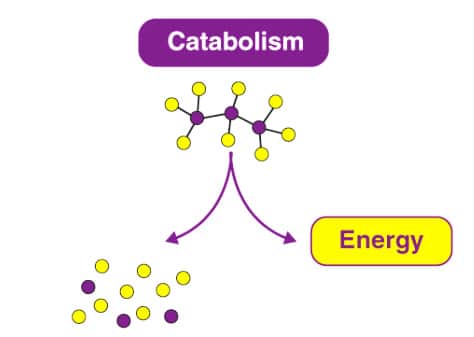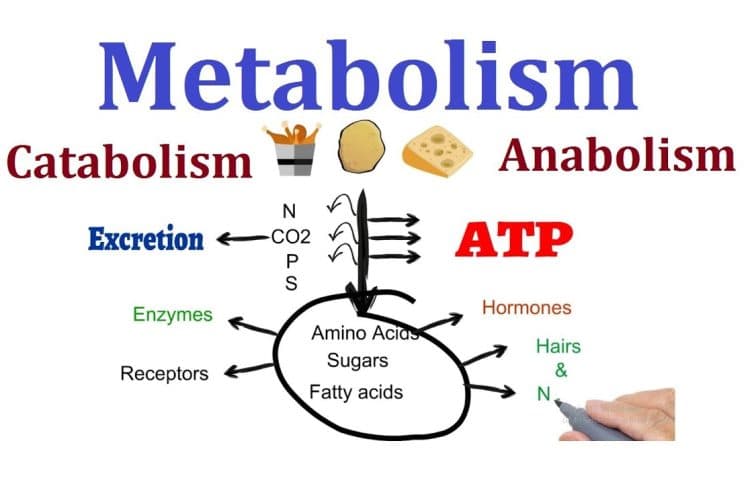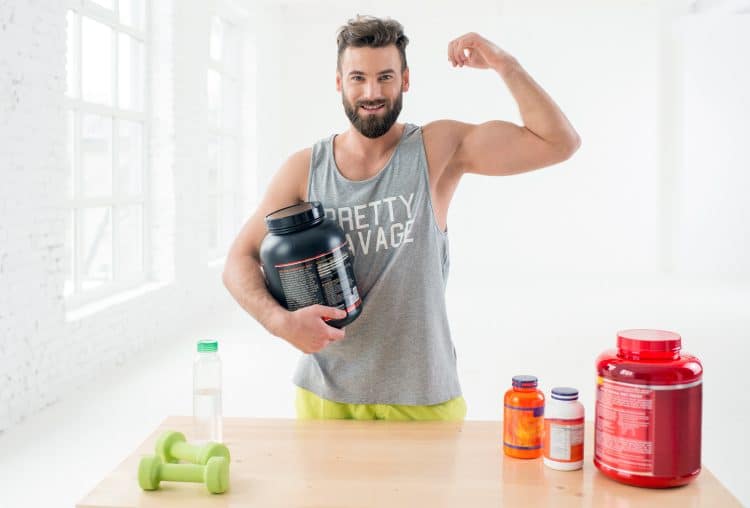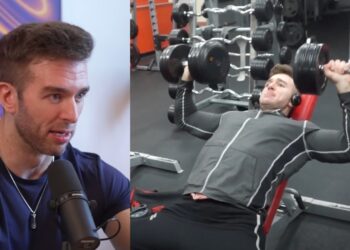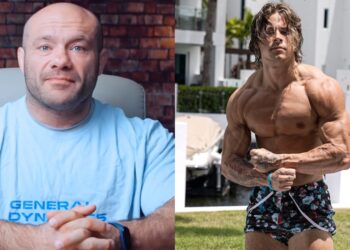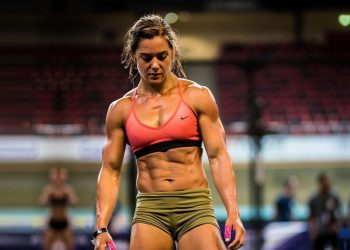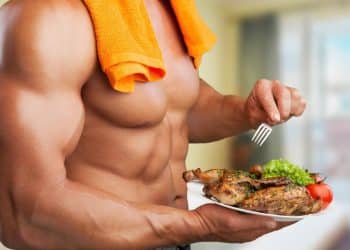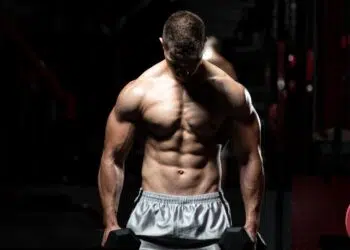Bodybuilders and fitness fanatics often use terms that are all but meaningless to non-exercisers. Unless you work out, things like the pump, positive nitrogen balance, lactic acid buffering, isolation exercises, and concentric and eccentric contractions are nothing short of gibberish.
Bro-speak, bro-science, plus an abundance of information on the internet, means that many exercisers use lingo when talking about training and nutrition. Unfortunately, in a lot of cases, even the people using these terms are not entirely sure what they’re talking about!
Needless to say, this can lead to a whole lot of confusion…
For the sake of clarity, in this article, we’re going to take a look at two frequently used terms – anabolic and catabolic – explaining what each one means and how they can be manipulated for greater gains.
Anabolic Metabolism
Anabolic is an adjective for anabolism, and you could be said to be in an anabolic state. In simple terms, anabolism means building. Anabolism is the holy grail of conditions for bodybuilders. After all, it’s what’s needed to build bigger, stronger muscles.
Level Up Your Fitness: Join our 💪 strong community in Fitness Volt Newsletter. Get daily inspiration, expert-backed workouts, nutrition tips, the latest in strength sports, and the support you need to reach your goals. Subscribe for free!
Like almost everything that happens in your body, anabolism is controlled by hormones. Hormones are chemical messengers that tell cells, organs, and systems how to behave.
The primary anabolic hormones are:
- Testosterone
- Growth hormone (GH)
- Insulin Growth Factor-1 (IGF-1)
- Insulin
- Estrogen
While most people associate anabolism with muscle growth, that’s just example of anabolism. Gaining fat is also an anabolic process. After all, it involves building bigger fat stores. That’s why our list of hormones includes estrogen and insulin, and not just the usual muscle-building hormones testosterone, GH, and IGF-1.
In anabolism, your body uses small compounds to make larger structures. For example, amino acids, the building blocks of protein, are used to build bigger, stronger muscles. In much the same way, excess nutrients from food are turned into and stored as body fat. Your fat cells swell, which is a type of hypertrophy.
For anabolism to occur, you need:
- A trigger – e.g., an intense strength training
- Energy – from food
- Building materials – mainly amino acids from protein
- Sleep – when anabolic processes are at their highest
- Hormones – adequate testosterone, IGF-1, GH, etc.
What About Anabolic Steroids?
Anabolic steroids are mostly synthetic variations of testosterone and growth hormone. These substances mimic the effects of the natural anabolic hormones produced by your body. An abundance of these hormones means that you can remain in an anabolic state for longer and build muscle in less than optimal situations, e.g. while dieting or training much harder or longer than normal.
Of course, taking steroids can cause a host of unwanted side effects, including high blood pressure, cardiovascular disease, kidney disease, mood swings, acne, depression, and premature death (1).
The Anabolic Window – Truth or Fiction?
A lot of exercisers believe in something called the anabolic window. This term describes the 2-3 hours that immediately follow a workout. The theory is that all food consumed during this time is preferentially diverted to your muscles to fuel anabolism. As such, eating after exercise is critical for building muscle, and if you miss it, your gains will suffer.
While the anabolic window theory makes a certain amount of sense, studies have revealed that it doesn’t exist (2), and you won’t harm your progress if you fail to eat shortly after exercise. Providing you are eating enough generally, you will gain muscle even if you don’t consume food during the anabolic window.
However, that said, if it’s convenient to eat shortly after your workout, there is no reason not to.
You can read more about the anabolic window here.
Catabolic Metabolism
Catabolic is an adjective for catabolism, which basically means breaking down. In a catabolic state, your body breaks down tissue into its constituent parts. This includes the breakdown of muscle glycogen into glucose for energy and muscle tissue into amino acids. Burning fat is also a catabolic process.
The primary catabolic hormones are:
- Cortisol
- Adrenaline
- Glucagon
- Catecholamines
Catabolism, like anabolism, is a natural part of your metabolism. Your body is constantly breaking things down to use for other purposes. The problem is when catabolism becomes excessive and outpaces anabolism.
Factors that can contribute to excessive catabolism include:
- Lengthy cardio workouts
- Overtraining
- Not getting enough sleep
- Too much stress
- Not eating enough
- Not hitting your macros, especially protein
- Ignoring your body’s need for rest and recovery
As such, while it is not necessary to avoid catabolism altogether, bodybuilders and anyone else looking to get stronger or more muscular should try and tip the metabolic balance away from catabolism and toward anabolism. This puts your body in a favorable state for muscle repair and growth.
Taking anabolic steroids minimizes catabolism. This helps explain why bodybuilders can do hours of cardio, follow a strict diet, and still preserve or even gain muscle.
Anabolic vs. Catabolic Metabolism
Many bodybuilders view anabolism and catabolism as opposing forces, with anabolism being good and catabolism being bad. However, that’s an overs implication of what are two codependent processes.
In fact, one cannot exist without the other.
When you hit the gym and train, your workout depletes your energy and causes microscopic trauma to your muscles. These are catabolic processes and are the trigger for anabolism.
Level Up Your Fitness: Join our 💪 strong community in Fitness Volt Newsletter. Get daily inspiration, expert-backed workouts, nutrition tips, the latest in strength sports, and the support you need to reach your goals. Subscribe for free!
Afterward, providing you rest, sleep, eat, and avoid excessive physical activity, your body will make the switch from catabolism to anabolism. During this time, the damage caused by your workout is repaired.
However, your body is not content with getting you back to where you just were. Instead, it builds MORE muscle so that, when you train again, your workout is not so stressful. As a result, and with subsequent workouts, you continue to get bigger and stronger. This is called supercompensation.
How to Minimize Catabolism and Maximize Anabolism
So, catabolism isn’t as evil as a lot of exercisers believe. In fact, without some kind of catabolic event, anabolism is less likely to occur. In short, you need to break your muscles down for them to grow back bigger and stronger. So, catabolism is a necessary part of the bodybuilding process.
That said, excessive catabolism is a problem, and if breakdown exceeds building, you’ll lose rather than gain muscle. As such, most exercisers should try and minimize catabolism and maximize anabolism.
Remember that catabolism is the trigger for muscle growth, but too much will impair muscle repair, recovery, and growth. Use these strategies to keep you in the catabolism/anabolism sweet spot for maximum gains.
Stimulate – Don’t Annihilate
While you need to train hard to trigger anabolism, there is a difference between intense and excessive. In most cases, 4-5 workouts per week is enough, and an hour or so per session should be plenty.
Longer, more frequent workouts could tip the balance away from anabolism and toward catabolism. Instead, determine how little training you need to achieve your goals and not how much you can tolerate. Doing more is not always better.
Feed Your Muscles
Your body needs calories and macronutrients to grow. If you aren’t eating enough, your body won’t have the energy and nutrients needed to fuel the anabolic process. If you want to build muscle, make sure you’re eating enough, and have all your nutritional bases covered.
Supplement Wisely
While you don’t have to use supplements for bodybuilding, there are a few that could help minimize catabolism or enhance anabolism.
Good choices include:
Use But Don’t Abuse Cardio
Low intensity, steady-state (LISS) cardio workouts are highly catabolic. That’s why long-distance runners are so slim. While cardio is essential for the health of your heart, lungs, and circulatory system, doing too much could hurt your muscle-building progress.
For most lifters high-intensity interval training (HIIT) is better than LISS cardio. Studies suggest that HIIT is more anabolic than catabolic. Whereas, for LISS cardio, the reverse is true (3).
If you feel that you have do a lot of cardio to lose weight or shed fat, you should overhaul your diet instead. That’ll save you a whole lot of training time and also reduce catabolism.
Get More Vitamin Zzzzz
Your body is at its most anabolic while you sleep. Not getting enough sleep can lead to lower levels of testosterone, GH, and IGF-1 and elevated cortisol levels (4). Because of this, if you want to maximize anabolism and minimize catabolism, you should do your best to get 7-9 hours of sleep every night and not just at weekends.
Try to Minimize Stress
All types of chronic stress are catabolic. Acute training stress is a necessary part of the bodybuilding process. Still, prolonged exposure to other kinds of stress will lead to increases in the production of the catabolic hormones and a subsequent decrease in anabolic hormones.
Types of stress include:
- Financial
- Emotional
- Familial
- Occupation
- Health
While it’s impossible to avoid stress altogether, it’s worth trying to learn how to manage it better so that it’s less destructive.
While it’s beyond the scope of this article to teach you how to deal with stress, effective strategies include:
- Better time management
- Effective delegation
- Avoiding perfectionism
- Changing job
- Avoiding known stress triggers
- Cutting down on sugar, alcohol, and caffeine
- Therapy
- Talking to a trusted friend
- Meditation
- Spending time in nature
Try to Naturally Elevate Your Testosterone Levels
Testosterone is an anabolic hormone. While men and women both produce testosterone, men tend to make about ten times as much. However, T-levels can fall into decline, leading to less anabolism. Stress, a poor diet, being overweight, and environmental toxins can all cause low T-levels.
The good news is that there are several foods that can naturally boost testosterone production, enhancing anabolism in the process. Adding these foods to your diet is easy, and you’re sure to appreciate their benefits.
Read more about 7 ways to boost your T-levels here.
Anabolic Vs. Catabolic – Wrapping Up
Anabolic and catabolic metabolism are opposite sides of the same bodybuilding coin. You can’t have one without the other. However, if catabolism outpaces anabolism, you’ll find yourself losing rather than gaining muscle.
Use the information in this article to maximize anabolism while limiting catabolism to the minimum needed to trigger muscle growth. Your workouts will be much more productive if you achieve the optimal balance between these two different but codependent metabolic states.
References:
1. PubMed: Effects of Androgenic-Anabolic Steroids in Athletes https://pubmed.ncbi.nlm.nih.gov/15248788/
2. PubMed: Nutrient Timing: A Garage Door of Opportunity? https://pubmed.ncbi.nlm.nih.gov/32629950/
3. The Journal of Strength and Conditioning Research: The Effect of a Brief Sprint Interval Exercise On Growth Factors And Inflammatory Mediators Https://Journals.Lww.com/
4. PubMed: Sleep And Muscle Recovery: Endocrinological And Molecular Basis For A New And Promising Hypothesis https://pubmed.ncbi.nlm.nih.gov/21550729/


